Summary of Climate Disasters on the Planet: January 22-28, 2025
You no longer need to be an expert to see the rapid escalation of climate disasters. January 2025 has once again demonstrated that the situation is worsening. Many people, witnessing these events, feel powerless. They believe that nothing can be changed, but that is not true. There is still a way out, and we will talk about it in our weekly Summary of Climate Disasters for the period from January 22 to 28.
Storm Éowyn
The powerful storm Éowyn that originated in the North Atlantic struck Ireland and the northern regions of the United Kingdom on January 24, bringing with it record-breaking winds and an unprecedented level of destruction. Dozens of flights were canceled at the airports of Glasgow, Edinburgh, Dublin, and Belfast. All bus and railway services were also suspended.
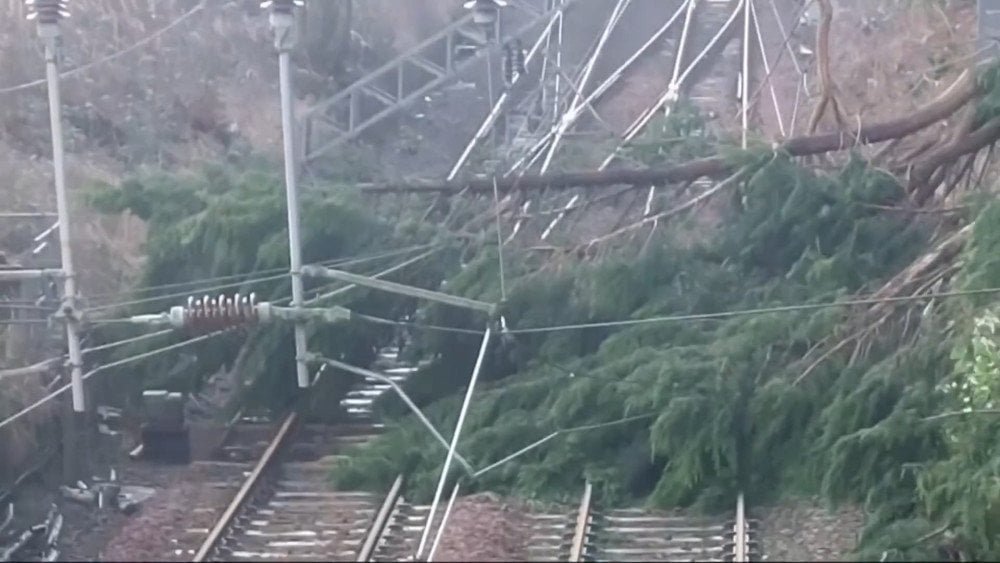
Trees, toppled by the intense winds, blocked railway tracks across the United Kingdom
In the United Kingdom, around 4.5 million residents of Northern Ireland and Scotland received emergency warnings. This was the largest deployment of the emergency alert system in the country’s history.
The strongest impact of the storm was felt in Ireland, where offshore waves reached a height of 20.1 meters (66 feet). At the Mace Head station in County Galway, wind speeds of 50.83 m/s (113.7 mph) were recorded, breaking the previous record of 50.56 m/s (113.1 mph) set in 1945.
According to Irish meteorologists, such powerful winds had not been observed since the beginning of meteorological records. Many buildings were damaged by falling trees. Around 120,000 homes and businesses were left without water supply, while 160,000 people lost Internet access.
The storm also severely damaged the power grid, leaving more than 1 million residents of both countries without electricity. In Ireland, 768,000 people were left without power, while in the United Kingdom, 283,000 were affected.
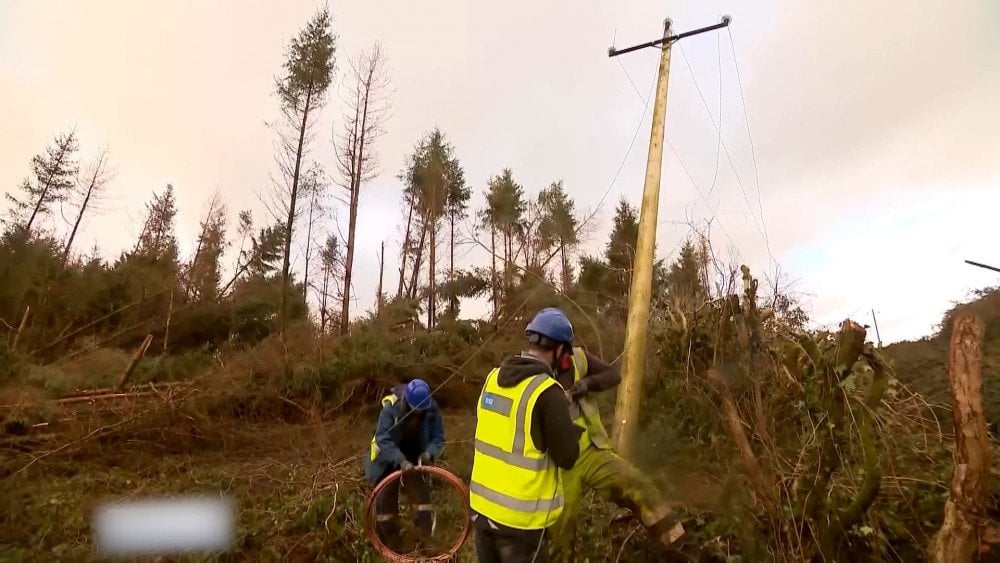
Repair work on power lines damaged by hurricane-force winds, Ireland
Ireland has appealed to the EU for emergency assistance in supplying high-capacity mobile generators, as ESB Networks, the country’s electricity provider, estimates that restoring power to nearly 280,000 people may take up to a week. About 100,000 people might remain without electricity even into the following month. The storm claimed two lives.
Éowyn demonstrated an incredible rate of intensification: the storm’s atmospheric pressure dropped by 38 hPa in just 6 hours, far exceeding the standard criteria for classification as an explosive cyclogenesis or bomb cyclone. According to the NOAA, the bombogenesis threshold is defined as a 24 hPa drop in atmospheric pressure within 24 hours.
Experts estimate that Éowyn could become the second billion-dollar climate disaster of 2025, alongside the Los Angeles wildfires.
United Kingdom
On the morning of January 23, a Category IF2 tornado swept through the village of Quintrell Downs in Cornwall, United Kingdom, leaving a trail of destruction in its wake. According to eyewitnesses, in just 5 to 10 seconds, trees were uprooted, and the roofs of several homes were almost completely torn away. A tornado of this strength, occurring in these latitudes during winter, is an entirely abnormal phenomenon.
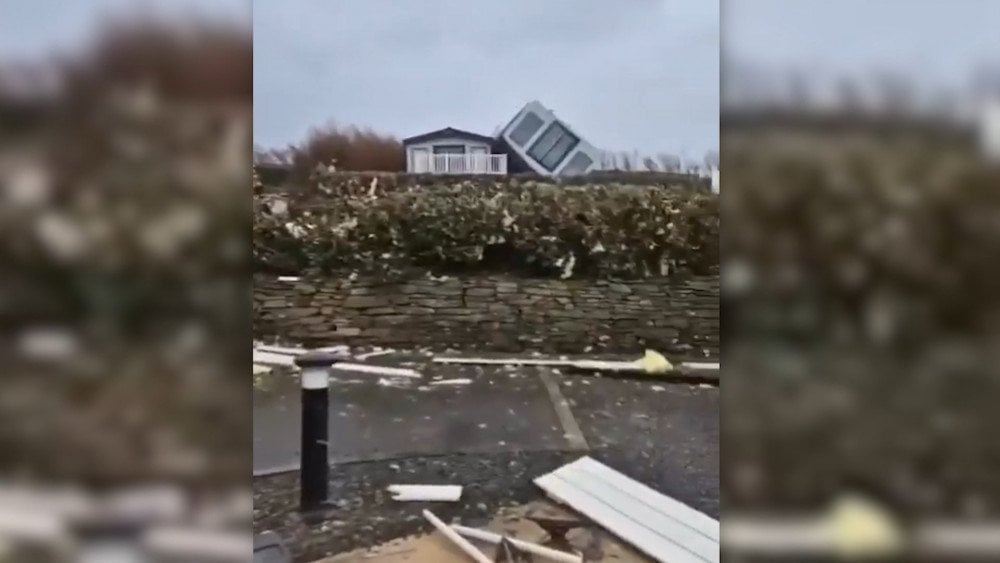
Aftermath of the tornado in the village of Quintrell Downs, Cornwall, United Kingdom
Storm Herminia
Hot on the heels of Storm Éowyn, Storm Herminia swept across Europe, impacting Portugal, Spain, France, the United Kingdom, and Ireland. On January 26, destructive waves up to 14 meters (46 feet) battered the northwestern coast of Portugal, from Figueira da Foz to Viana do Castelo.
In the Galicia region of Spain, the storm left more than 13,000 homes without power and claimed at least one life.
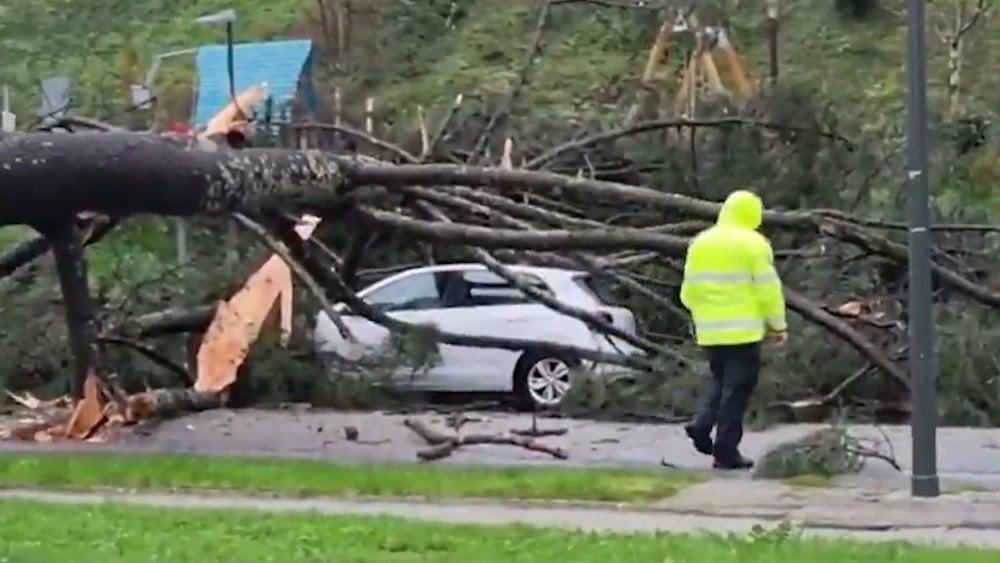
A tree, toppled by the powerful winds, crushed a car and blocked a road in Galicia, Spain
In the Basque Country, wind gusts of up to 160 km/h (100 mph) brought down numerous trees, blocking roads throughout the region.
The northwest of France was also hit by the storm, with heavy rainfall and hurricane-force winds exceeding 100 km/h (62 mph). In Brittany, and its capital city, Rennes, the storm triggered the worst flooding in the past 40 years.
Rail and road transportation were paralyzed, and urban infrastructure was significantly damaged. Many residents were isolated, as floodwaters infiltrated the ground floors of their homes.
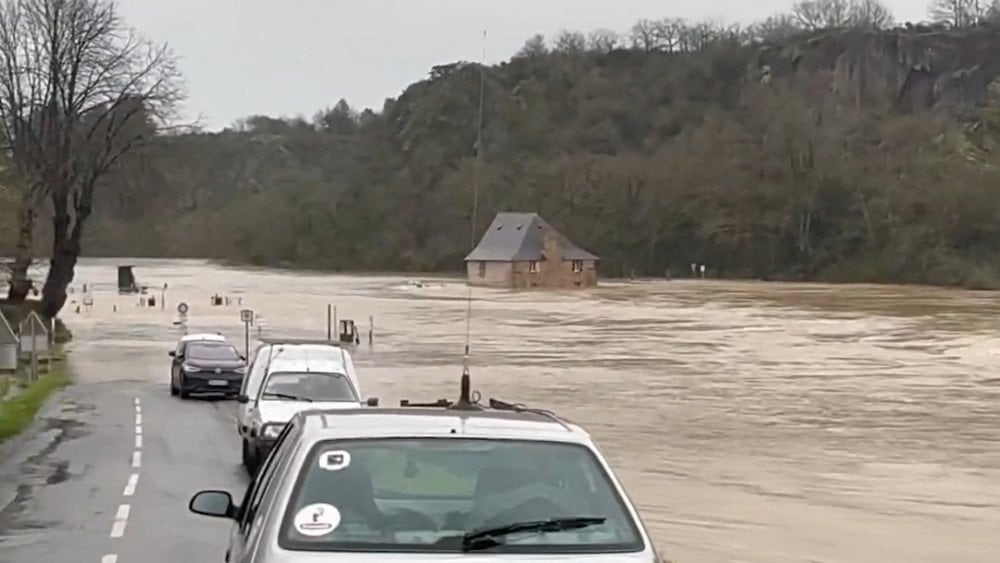
Roads and surrounding areas submerged after intense rainfall, France
The United Kingdom also suffered significant damage, with many regions still reeling from the recent impact of storm Éowyn. In southern England and Wales, Storm Herminia caused widespread power outages, flooding, and transport disruptions. In Somerset County, more than 100 people had to be urgently evacuated from their homes due to severe flooding. According to locals, water levels reached record highs in recent years.
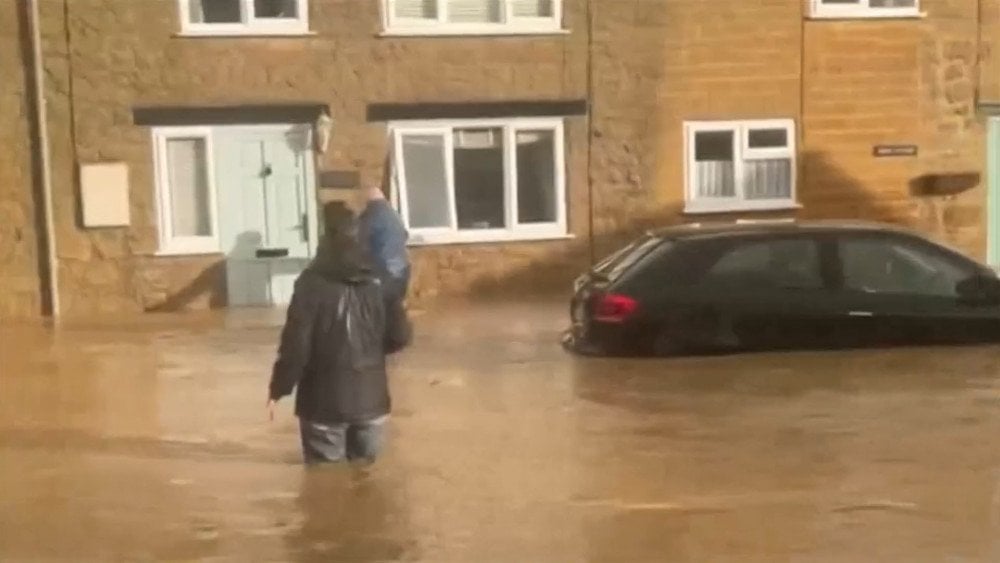
House submerged by floodwaters after Storm Herminia, United Kingdom
New Zealand
Nearly 5,000 households lost power on January 26 in northern New Zealand.
The cause was powerful winds and thunderstorms that triggered more than 800 lightning strikes. At the Tiritiri Matangi Island Lighthouse in the Auckland region, a wind gust of 122 km/h (76 mph) was recorded.
That same day, a powerful tornado tore through the town of Mangawhai in Northland, damaging more than 50 buildings. Two people were seriously injured when the strong winds demolished their home and threw them outside.
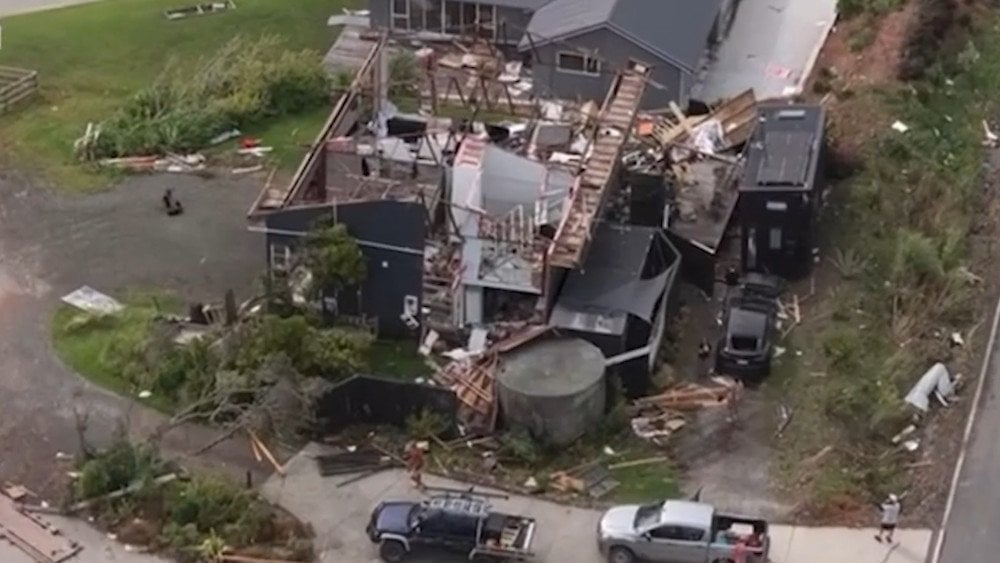
A tornado severely damaged a residential house, leaving it almost completely destroyed in Mangawhai, Northland region, New Zealand
A storm warning had been issued, but the forecast failed to convey the true intensity of the approaching disaster.
Russia
In Yakutsk — one of the coldest cities on Earth — record-breaking warmth arrived in January. On some days, the air temperature exceeded the climate norm by more than 24°C (43°F)!
Daily temperature records were broken for six consecutive days, from January 20 to 25.
On January 23, the temperature rose to -6.8°C (19.8°F) — 12°C (21.6°F) higher than the previous record for that day, set in 1932.
Local residents reported budding willows, an occurrence unusual even for early April, and birch trees showed swollen catkins.

January heat anomaly — willows budding, Yakutsk, Russia
In northern Yakutia, in the village of Tiksi in the Bulunsky District, hurricane-force winds of over 33 m/s (74 mph) were recorded from January 26 to 28. Blizzard conditions reduced visibility to just 100 meters (328 feet).
On January 26, wind gusts reached 44 m/s (98 mph) at -27°C (-16.6°F). According to a Russian meteorologist, the feel-like temperature under these conditions is perceived as approximately -80°C (-112°F)!
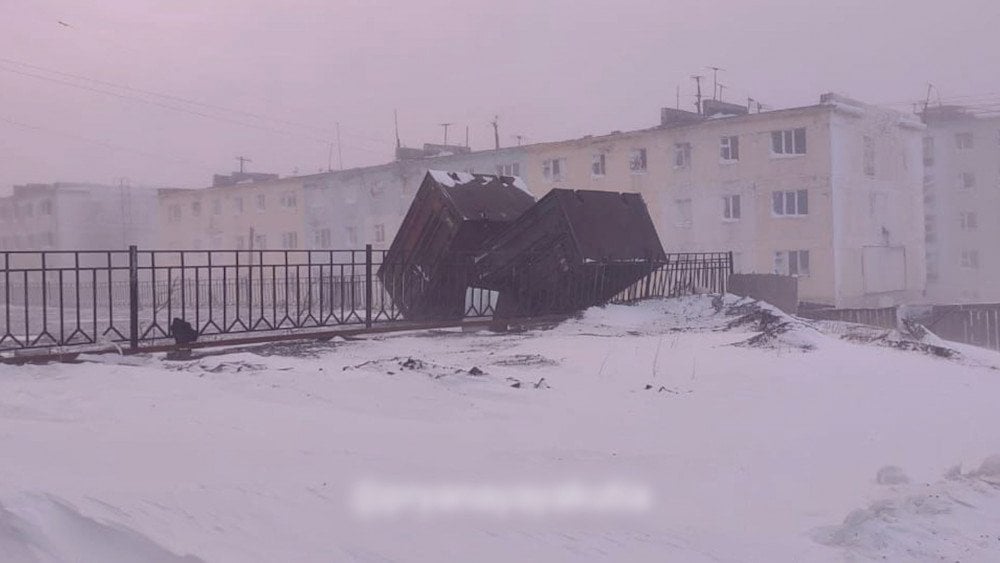
Hurricane-force winds in Tiksi, Yakutia, Russia
At the Tiksi Airport, the rotor blades of two Mi-8 helicopters operated by Polar Airlines were damaged by the winds. In the nearby village of Bykovsky, the storm completely tore off the roof of an apartment building.
On January 22, almost the entire southern region of Siberia was hit by extreme weather conditions. The affected areas included: Krasnoyarsk Krai, Altai Krai, Tomsk Oblast, Omsk Oblast, Novosibirsk Oblast, The Republics of Khakassia, Tuva, and Altai.
After nearly a month of anomalously warm temperatures, the region experienced a sudden cold snap.
In Novosibirsk, the temperature plummeted by more than 20°C (36°F) in just 24 hours. On January 22, the maximum temperature was +1.1°C (34°F), but by January 23, it dropped to -22.1°C (-7.8°F). The cold was accompanied by intense winds: In the Altai Republic, winds reached 32 m/s (72 mph). In Khakassia, wind speeds hit 30 m/s (67 mph).
Heavy snowfall combined with squally winds caused massive power outages due to downed power lines. Hurricane-force winds also uprooted trees, toppled traffic lights, tore off roofs, and knocked pedestrians to the ground. Many regional and federal highways were closed.
In Novosibirsk, a falling tree injured two schoolchildren.
In the Altai Krai, in the cities of Barnaul and Rubtsovsk, as well as the towns of Pavlovsk and Mamontovo, a severe snowstorm was accompanied by thunder and lightning.
USA
On January 22, a wildfire named Hughes broke out near Castaic Lake in northern Los Angeles County, California. The fire rapidly spread across an area of more than 4,000 hectares (9,900 acres), prompting evacuation orders for 54,000 people.
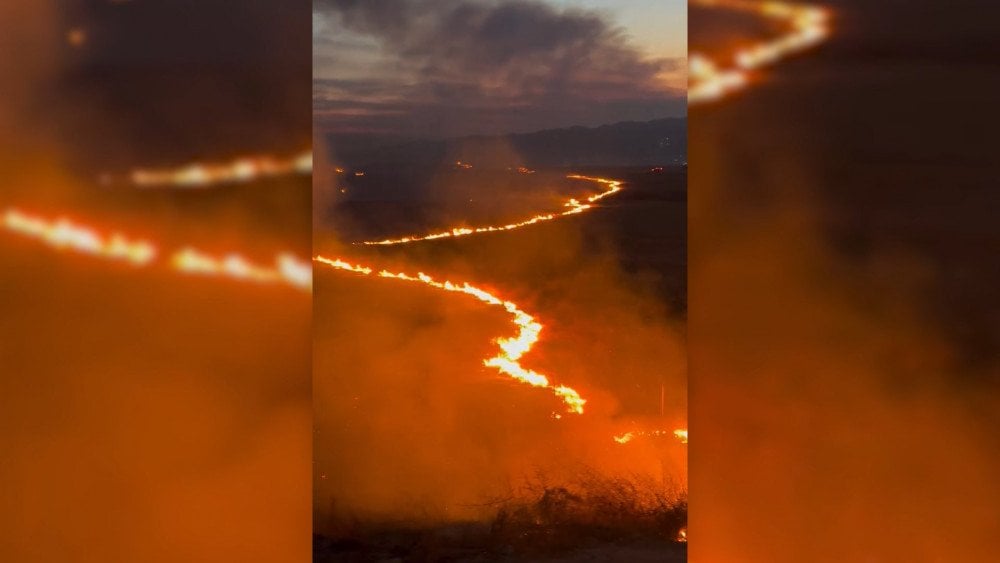
A vast area engulfed by the Hughes wildfire, Los Angeles County, California, USA
The fire’s rapid spread was fueled by winds reaching 80 km/h (50 mph) and dry conditions with humidity dropping below 10%. Fortunately, the winds were not strong enough to prevent aerial firefighting efforts, unlike during the recent Eaton and Palisades wildfires.
On January 26, Southern California finally received long-awaited rain, which helped contain 95% of the “Hughes” wildfire. Although the rainfall was not exceptionally heavy — with a maximum of 30.5 mm (1.2 inches) — it brought new dangers to the areas scorched by recent historic wildfires.
In Woodland Hills, Los Angeles, mudslides blocked several roads and trapped multiple vehicles. Schools were closed, and numerous roads were shut down across the region. Landslides also blocked Palisades Drive and Topanga Canyon. Reports indicate that a mudslide swept away a truck in the area.
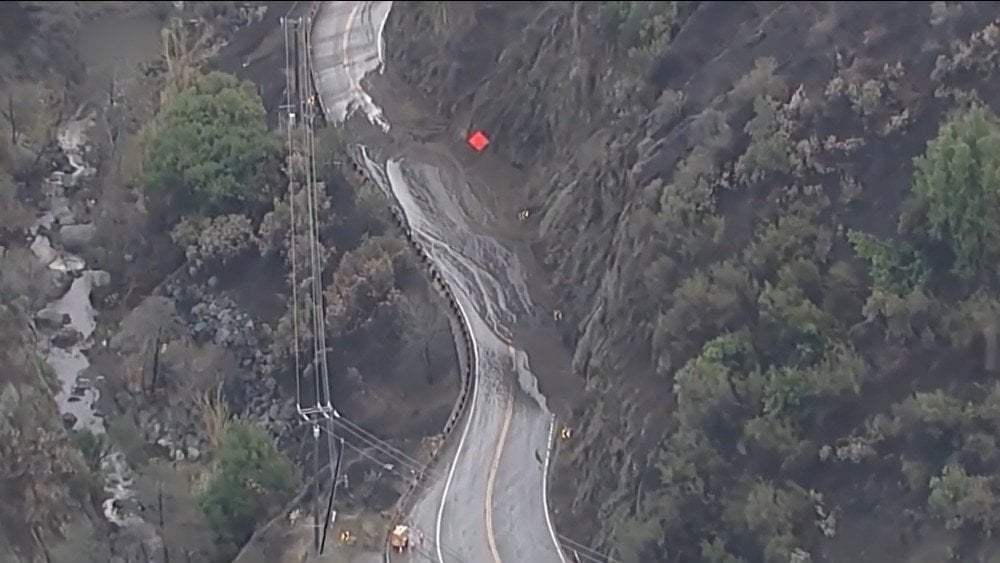
A large landslide covering Palisades Drive and Topanga Canyon, Los Angeles, USA
It is important to note that landslides and debris flows will continue to pose a significant threat whenever heavy rain falls in these fire-affected areas. This risk will persist throughout this year and potentially into the next.
Brazil
For two consecutive days, on January 23 and 24, powerful storms lashed the southern states of Brazil, affecting Rio Grande do Sul, Santa Catarina, and São Paulo.
In the city of São Paulo, 122 liters ( or 4.8 inches) of rain per square meter fell in just two hours — 41.7% of the average rainfall for January.
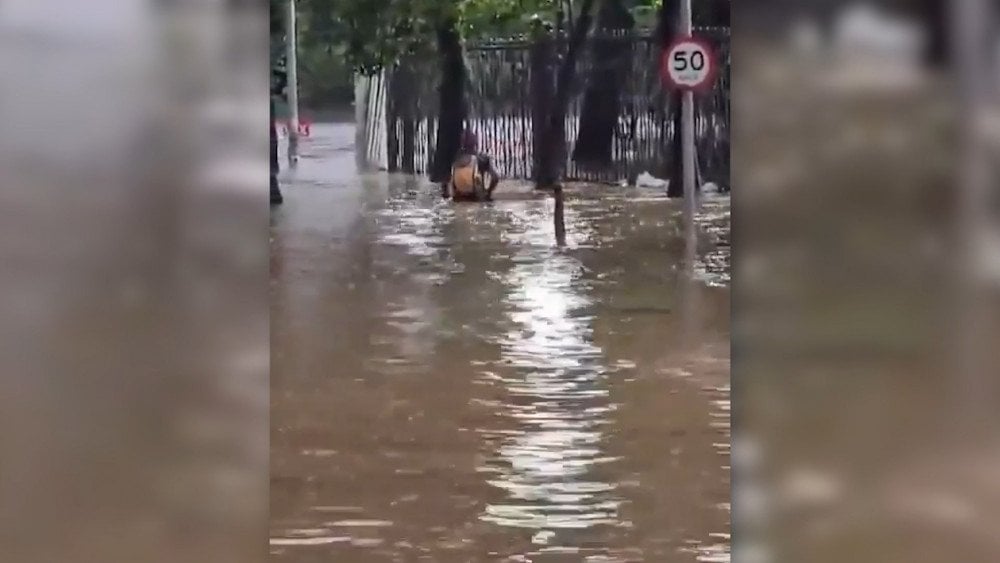
A local resident escapes from a critically flooded area in São Paulo, Brazil
Streets were submerged within minutes. Cars were swept away by raging torrents, and thousands of vehicles were stuck in traffic jams. Subway services were disrupted.
At the Jardim São Paulo-Ayrton Senna station, floodwaters rushed into the platform, forcing passengers to cling to railings to avoid being swept away.
At the Centro Norte shopping mall, part of the ceiling collapsed during the storm. On January 24, 179,667 people in Greater São Paulo and surrounding areas were left without electricity.
In the municipality of Uruguaiana, the storm brought heavy rain and wind gusts of up to 94 km/h (58 mph), knocking down trees and power lines. Despite the damage, residents welcomed the rain, as the area had been under a state of emergency due to a severe drought. Rainfall in Rio Grande do Sul has become highly spotty, providing little relief from the ongoing water shortage. The drought has caused significant losses to the summer harvest. Reservoirs are drying up, and some towns are now relying on water deliveries from water trucks.
The immense power of these disasters comes from the accumulated energy of an overheated ocean. This is already an undeniable fact. We have repeatedly explained the causes of this oceanic warming in previous articles. For more detailed information, we recommend watching “The Climate Crisis and Ocean Pollution: Global Challenges and Solutions” documentary. Now, let's focus on how to overcome this issue.
Currently, the ocean is clogged with plastic, which has altered the thermal conductivity of ocean waters. This disruption hinders the ocean’s ability to transfer heat from the Earth's interior through the atmosphere and into space. By removing plastic — including the smallest fragments like micro- and nanoplastics — we can restore the ocean’s natural role as the planet’s global air conditioner. To achieve this, experts propose the use of atmospheric water generators. These devices extract water directly from the air while filtering out microplastics and other pollutants. If we scale this technology worldwide, it will not only reduce the intensity of storms, droughts, extreme temperature shifts, and other climate disasters by restoring natural atmospheric cycles, but it will also help address the global water shortage. Visible results could appear within 2–3 years. By implementing this solution, we can tackle the global climate crisis and secure the future of our planet.
You can watch the video version of this article here:
Leave a comment